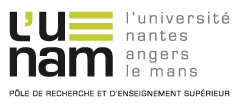Quantification of light polycyclic aromatic hydrocarbons in seafood samples using on-line dynamic headspace extraction, thermodesorption, gas chromatography tandem mass spectrometry, based on an isotope dilution approach
Résumé
The aim of our work was to develop an analytical strategy to quantify naphthalene, acenaphthylene, acenaphthene, fluorene, phenanthrene and anthracene in fish products by on-line dynamic headspace extraction, followed by thermodesorption injection and gas chromatography analysis coupled with tandem mass spectrometry using electron ionization mode (DHS-TD-GC-EI-MS/MS). The developed protocol used 1 g of freeze-dried or oil sample supplemented with perdeuterated light PAHs. The sample was heated at [90-100 degrees C], the headspace of the sample was swept by nitrogen and the trapping of the PAHs was carried out on a Tenax-type adsorbent placed at 25 degrees C. Analytes were thermodesorbed at 300 degrees C from the dried adsorbant and then cryofocused on a cooled injection system (CIS) at -25 degrees C before injection (12 degrees C s(-1) up to 300 degrees C). The chromatographic separation of PAHs was carried out on a 5-MS type column (30 m x 0.25 mm, 0.25 mu m) and the acquisition of the signals was performed in SRM following the transitions, involving the loss of one or two hydrogen atoms from the molecular ion. In view of the principle of extraction, the calibration curve was performed on a representative matrix or using the standard addition method. Quantification limits were determined between 0.01 and 0.6 ng g(-1) of matrix from the method blank results. The method was validated by a series of multi-level supplemented matrix assays and by the analysis of a reference material from an inter-laboratory test (mussels, IAEA-432). The average of the expanded measurement uncertainty was from 9 to 44% for the four lightest PAHs, except for fluorene when the sample incubation was set at 90 degrees C. Occurrence measurements were performed on almost two hundred samples of molluscs, echinoderms and fish. The results have shown a quantification frequency greater than 66% for naphthalene and fluorene, at concentrations below a few ng g(-1) of dry matter of fishery products. With this methodology, the light PAHs occurrence can now be measured in a wider range of foodstuffs in order to better characterize their contamination trends and the associated risk simultaneously.
Origine : Fichiers produits par l'(les) auteur(s)




